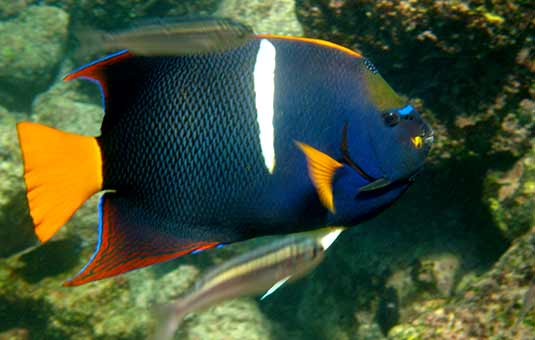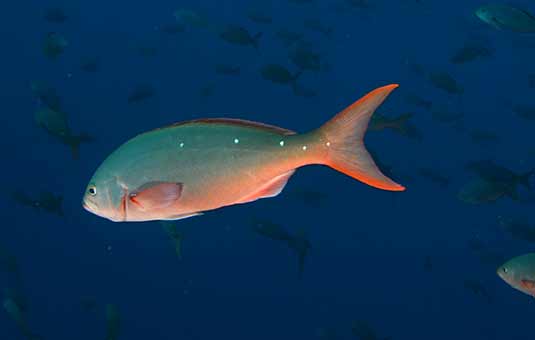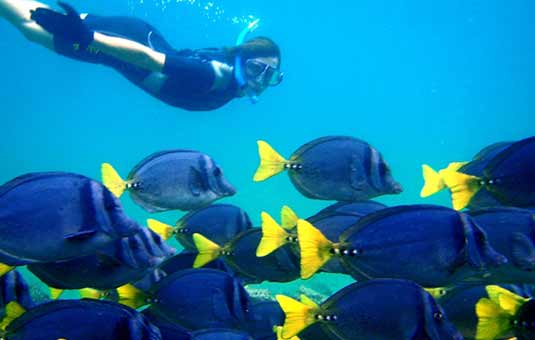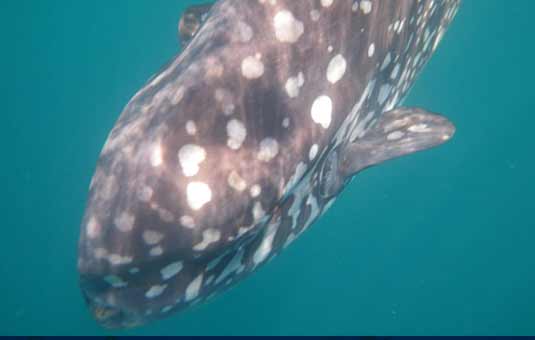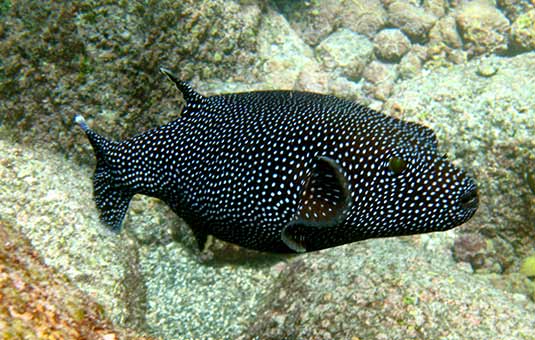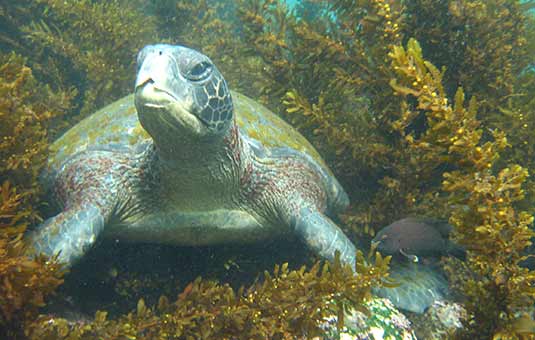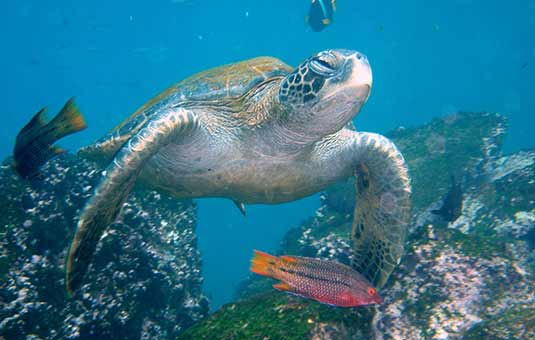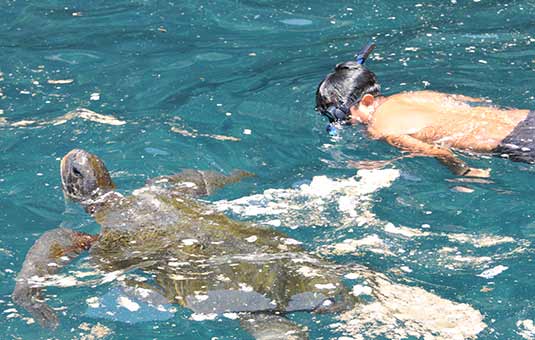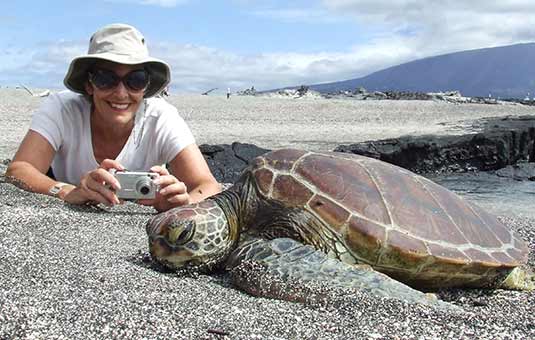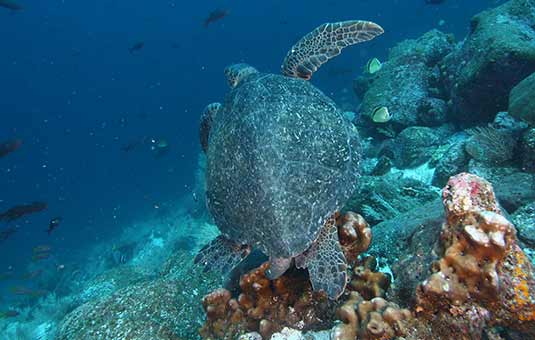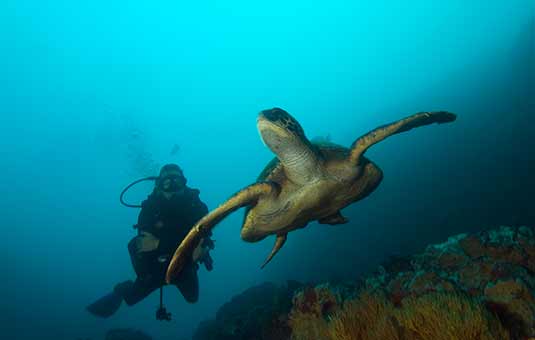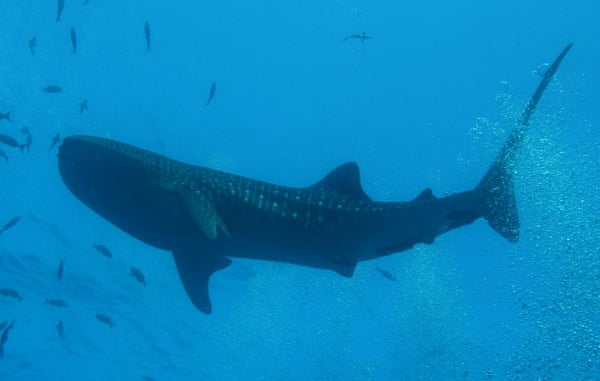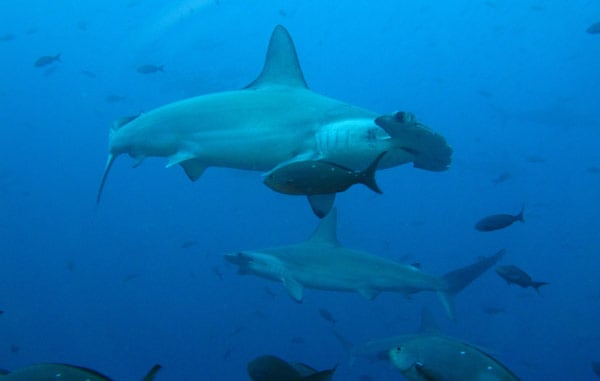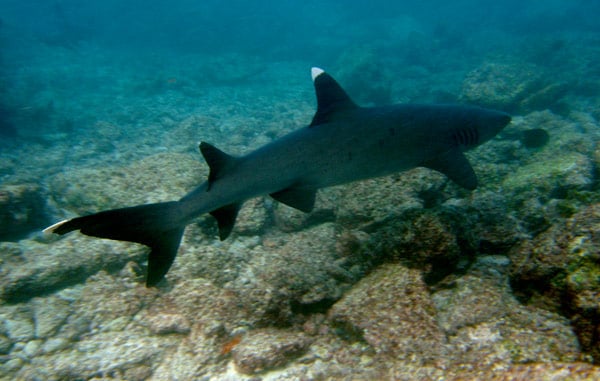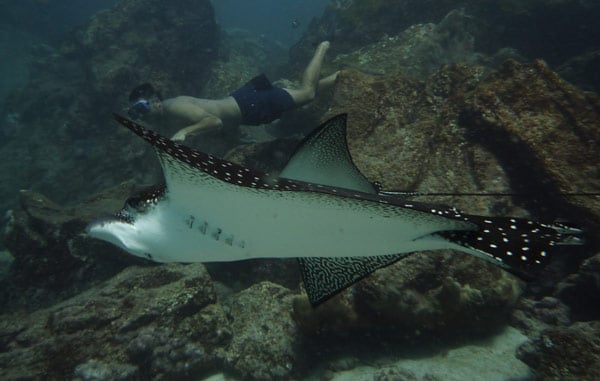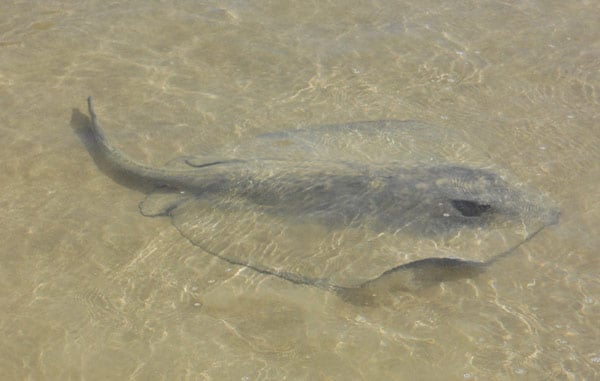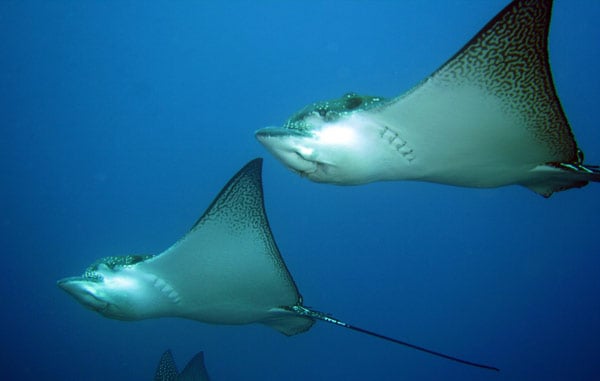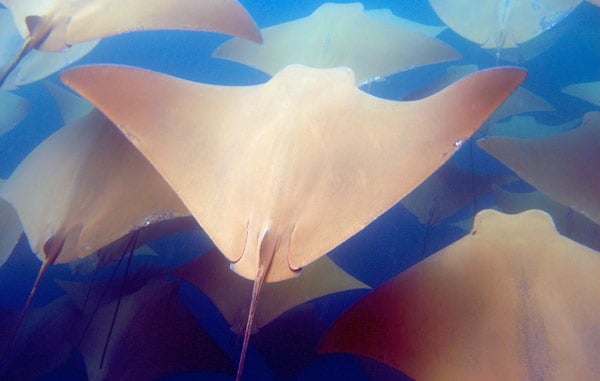Galapagos Marine Animals
Snorkeling in Galapagos: What sort of fish will I see?
One of the highlights when visiting Galapagos is the chance to strap on a mask and snorkel and jump in with the fish. Galapagos is a world-class snorkeling and diving destination and every year thousands of visitors enjoy spending some quality time with local marine life. There are a variety of snorkeling sites in the islands: from easy trips from the beach to the strong currents of the Devil's Crown, there is something for every skill level.
Many visitors want to know what sort of fish they may see while snorkeling. It's impossible to say for certain, as types of fish vary from site to site and come and go during different times of the year. There are, however, some very common fish that tend to be found in the relatively shallow, calm waters favored by Galapagos snorkelers. Here are just a few:
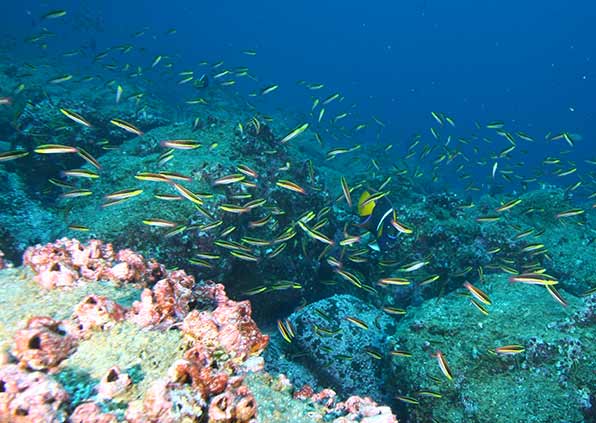
Yellow-tailed Surgeon Fish
Rounded, silver-and-yellow colored fish that often swim together in large and impressive schools. They can also be identified by the three dark dots on their sides near their tail and the two nearly vertical stripes on the sides of their "face." They get their name from the sharp spine in their tail, which is meant to discourage predators. Even hungry sea lions have learned to only eat them head-first to avoid hurting themselves on these spines. They're seen just about everywhere and tend to ignore snorkelers.
King Angelfish
The King Angelfish (holacanthus passer), the only variety of angelfish found in the islands, is a dazzling blue with orange/red fins and tail. It is also easily identified by a long white vertical stripe on its side. It's a medium-sized, squarish fish, about the size of a man's hand with the fingers spread out. They're commonly seen at most snorkeling sites, although they're a little shy and may swim away from snorkelers.
Sergeant-major
A very common tropical fish, the ubiquitous Sergeant-major (Abudefduf saxatilis) is found at just about every snorkeling site in Galapagos. They're smallish, rounded fish easily identified by the black stripes on their backs. They're colored a deep blue and are very pretty fish to look at.
They're not particularly shy and won't swim off until you get fairly close. They occasionally school, but as often or not you'll see only one or two at a time.
Parrot Fish
Parrot fish (Scaridae family) are long, colorful fish that feed on organisms that live on and in coral. They have to crush the coral with their "beak" of a mouth, which gives them their name. Often, you'll hear parrot fish underwater before you see them. They are brightly colored, blue, green and orange and tend to prefer shallow, rocky waters with lots of coral for them to gnaw on. They're shy unless you approach slowly.
Other non-fish marine wildlife in Galapagos
In addition to the hundreds of fish species that call Galapagos home, there are many other marine species frequently seen by visitors, including sea turtles, sharks, rays, octopi, crustaceans and more! And let's face it: reef fish are cool, but wouldn't you rather see a shark or sea turtle?
Sea Turtles
The Green Sea Turtle lives and breeds in the islands: on certain beaches you'll see signs put up by the park service to keep visitors from disturbing turtle nests. These gentle giants are a common sight for snorkellers, as they often feed in fairly shallow waters, gnawing seaweed and algae off of rocks. They also eat jellyfish. They can get quite large, almost as big as the famous Galapagos tortoises. You never know for sure where you'll see one. If you're snorkelling along a steep shore (like Rabida or Genovesa), keep one eye on the deeper side and you may see one swim past. At deep water snorkel sites such as the Devil's Crown, look for them down low in the deeper sections where the current is strong. The best place to see them is when snorkelling from shore, such as Bartholomew: look for them in weedy spots. Tip: if you see one, keep your eyes open for more: while they don't exactly "school" like fish, it is not uncommon to find groups of them in the same area.
- Where is it found: Can be found on most islands in the archipelago.
- When is it found: The prime season for nesting is from December to June.
- Interesting fact: Males never leave the sea, but females come ashore on beaches to nest and lay eggs on several of the islands.
Sharks
A number of shark species call Galapagos home. The most commonly seen is the inoffensive White-tipped Reef Shark, a small-to-medium sized shark easily identified by the white tips on its dorsal and tail fins. They can be seen in deeper water at many of the best snorkelling sites, including the Devil's Crown. There is also a small channel that fills up with them on Isabela Island, although there is no snorkelling there. The White-tipped Reef Shark is harmless and tends to swim away from humans. Less commonly seen are the endemic Galapagos shark, occasionally seen near Puerto Egas, hammerhead sharks and the spectacular whale shark, generally only seen at the remote islands of Darwin and Wolf.
Rays
There are four different sorts of rays that you may see: Golden Cownose Ray, Stingray, Spotted Eagle Ray and Manta Ray. Stingrays are probably the most commonly sighted rays in Galapagos: look for them anywhere there is a sandy bottom with occasional rocks. Despite their reputation (and the whole Steve Irwin incident), stingrays are pretty much harmless: they get their name from a stinger in their tail, which they use as a defense mechanism. You're only in danger from it if you step on one: they are not aggressive and will not "attack" snorkelers. As for the other sorts of rays, there is really no predicting where you will see them, as they swim around looking for food. The Golden Cownose Ray is a dazzling golden yellow color: they often travel in groups and aren't very large, reaching up to about a meter across. Spotted Eagle rays have a dark back with white spots and are much larger, some reaching two meters across. Manta rays are enormous beasts that feed on plankton near the surface: you'll know one when you see it, as they are massive and impossible to mistake for anything else.
Sea Lions
If you're lucky, some frisky sea lions will decide to play with you while you're snorkelling. They like to swim towards you and turn away at the last moment and may nip your swim fin. They're mostly harmless and fun, but if you find yourself in the territory of an aggressive male you may want to get out quickly. Males are identified by the bump on their heads and may also "bark" at you. More about Sea Lions.
More marine life you may encounter
There are lots of other critters in Galapagos waters. Keep your eyes peeled for crabs, lobsters and octopi, all of which are quite common but rarely seen. Eels, especially Moray Eels, are common. You may be visited by a Galapagos penguin, especially if you're swimming near Bartholomew Island. Very fortunate snorkelers have even seen blue-footed boobies crashing into the water near them, looking to snap up small fish!
Tips: The more spectacular marine life tends to prefer deeper waters: you're much more likely to see sharks at places like Devil's Crown than off of any given beach. It's a good idea to stick close to your guide, as he/she may spot something you missed. Octopi, for example, are extremely hard to see, as they blend into their environment. An experienced guide may spot them more easily.



